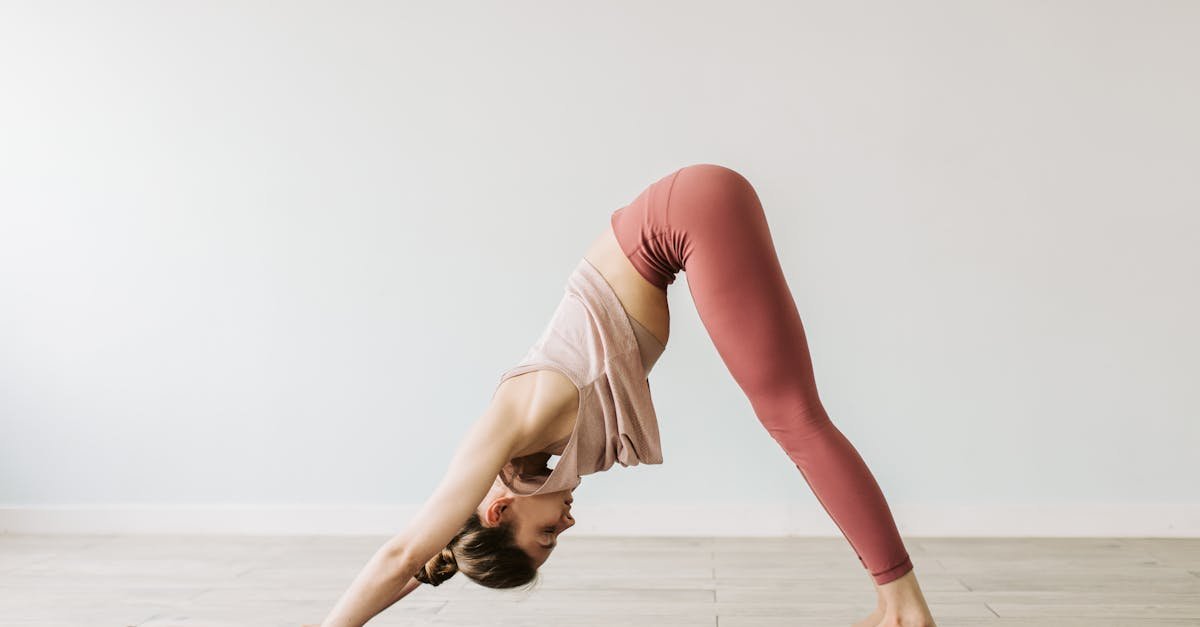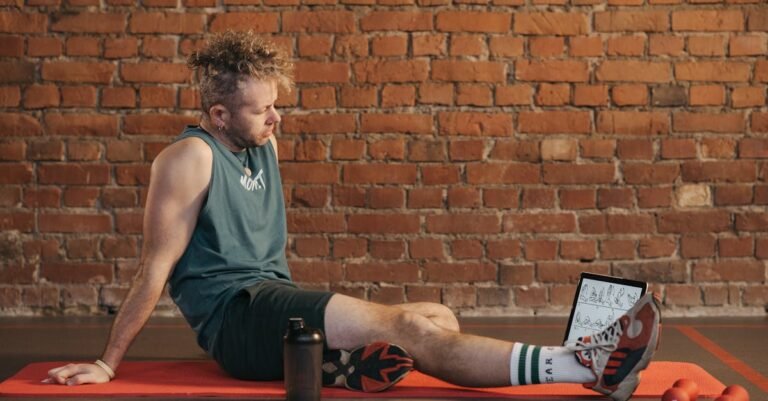Table of Contents
- Flexibility Training Vs Mobility Training: Unlocking Your Body’s Potential
- Decoding the Terms: Flexibility and Mobility Defined
- What Exactly is Flexibility? Think Passive Range
- And What About Mobility? Think Active Control
- Why Does Everyone Mix Them Up? The Common Confusion
- Flexibility Training In Depth: Stretching Smarter
- Mobility Training Explored: Moving with Purpose
- Flexibility vs. Mobility: The Side by Side Showdown
- Which Path Should You Take? Tailoring Your Training
- Navigating Common Training Mistakes
- Conclusion: Achieving Fluid, Functional Movement
- Frequently Asked Questions (FAQs)
Flexibility Training Vs Mobility Training: Unlocking Your Body’s Potential
Ever feel stiff as a board after sitting too long? Or maybe you hit a plateau in your workouts, unable to squat deeper or reach further? You’ve probably heard the terms “flexibility” and “mobility” thrown around, often used interchangeably. But guess what? They’re not the same thing! Understanding the difference between flexibility training and mobility training is crucial if you want to move better, feel better, and perform at your best. Think of it like knowing the difference between just having car parts (flexibility) and having a car that actually drives smoothly and efficiently (mobility). Ready to dive in and figure out what your body truly needs? Let’s unravel this common confusion.
Decoding the Terms: Flexibility and Mobility Defined
Before we get into the nitty gritty, let’s clear the air. We often hear people say, “I need to get more flexible,” when maybe what they really mean is they need better mobility, or perhaps a combination of both. It’s easy to see why they get mixed up, as they are related concepts dealing with range of motion. But their focus, application, and the way you train them are distinct. Getting this right can be a game changer for your physical health and athletic pursuits.
What Exactly is Flexibility? Think Passive Range
So, what is flexibility? At its core, flexibility refers to the ability of your muscles and connective tissues (like ligaments and tendons) to lengthen passively through a range of motion. Imagine someone gently pushing your leg higher while you’re lying on your back – that’s testing your passive hamstring flexibility. You aren’t actively controlling the movement; an external force (gravity, a partner, a strap) is doing the work to stretch the muscle.
Flexibility is primarily about the extensibility of the soft tissues. Can your muscle fibers elongate? How much give do your tendons have? It’s about the potential range your joints could achieve if acted upon.
Static Stretching: The Classic Example
The most common type of flexibility training is static stretching. This is the classic “reach and hold” type of stretch, like holding a hamstring stretch for 30 seconds or pulling your arm across your chest. You move into a position where you feel a gentle pull in the target muscle and hold it there. It’s passive because you’re relying on the hold, perhaps gravity or your own body weight, to maintain the stretched position, rather than muscular effort to move through the range.
PNF Stretching: A Deeper Dive
Proprioceptive Neuromuscular Facilitation (PNF) stretching is another, slightly more advanced, flexibility technique. It often involves a partner and typically uses a “contract relax” sequence. For example, you might push against resistance in the stretched position (contracting the muscle) and then relax deeper into the stretch. This technique essentially tricks your nervous system into allowing a greater temporary increase in muscle length. It’s still primarily focused on improving the passive range of motion.
And What About Mobility? Think Active Control
Now, let’s shift gears to mobility. Mobility is about your ability to actively move a joint through its full range of motion with control. It’s not just about whether your muscles can lengthen; it’s about whether you can use that length functionally and intentionally. Think about lifting your leg straight up in front of you as high as you can, using only your leg and hip muscles – that’s active hip flexion mobility.
Mobility involves not just the muscles, but also the joint itself (the joint capsule, cartilage), and crucially, your nervous system’s ability to control the movement throughout that range. It’s about strength and coordination within your range of motion. Having great flexibility without mobility is like having a super flexible rubber band that you can’t actually control or use effectively.
Dynamic Stretching: Movement Prep
Dynamic stretches are a cornerstone of mobility training. Unlike static holds, these involve actively moving your body parts through their full range of motion. Think leg swings, arm circles, torso twists, or walking lunges with a twist. These movements prepare the muscles and joints for activity, improve blood flow, and enhance neuromuscular coordination – essentially waking up your body’s control system.
Controlled Articular Rotations (CARs): Joint Health Focus
CARs are active, rotational movements of a joint at the outer limits of its motion. Imagine slowly and deliberately drawing the biggest circle possible with your shoulder or hip joint, keeping the rest of your body still. The goal is to actively explore and maintain the joint’s workspace, improving control, joint health, and proprioception (your body’s sense of its position in space). CARs are fantastic for assessing and improving your active, controlled range of motion.
Why Does Everyone Mix Them Up? The Common Confusion
So why the perpetual mix up? It stems from the fact that flexibility is a component of mobility. You generally need a certain degree of passive flexibility (muscle length) to allow for active movement through a range of motion. If your muscles are incredibly tight (poor flexibility), they can physically restrict your joint’s ability to move, thus limiting mobility.
However, having great flexibility doesn’t automatically guarantee good mobility. You might be able to flop into the splits (amazing passive flexibility), but can you control your leg movements smoothly and strongly through that entire range? Can you lift your leg high using only muscle power? If not, you have flexibility but lack the corresponding mobility (strength and control within that range). The confusion arises because they both relate to range of motion, but one is passive potential (flexibility) and the other is active, controlled capability (mobility).
Flexibility Training In Depth: Stretching Smarter
Let’s dig a bit deeper into flexibility training. We know it’s about increasing the passive length of muscles and connective tissues. But how does that actually happen, and what are the real world effects?
The Physiological Magic of Stretching
When you hold a stretch, you’re applying tension to muscle fibers and the surrounding fascia (connective tissue). Initially, your nervous system might resist, triggering a stretch reflex to prevent overstretching. However, with sustained, gentle holds (like in static stretching), the nervous system gradually adapts, allowing the muscle to relax and lengthen slightly. This is often referred to as increasing your ‘stretch tolerance’.
Over time, consistent stretching might lead to more permanent changes, potentially through mechanisms like adding sarcomeres (the basic contractile units of muscle) in series, or altering the properties of collagen within connective tissue. PNF techniques work more directly on the nervous system, temporarily inhibiting the muscle’s contraction signal to allow for a greater stretch.
Reaping the Rewards: Benefits of Flexibility
Why bother with flexibility training? Well, having adequate flexibility can:
- Increase Range of Motion (Passively): This is the primary goal – allowing joints to be moved further.
- Potentially Reduce Muscle Soreness: Some evidence suggests stretching after exercise might alleviate delayed onset muscle soreness (DOMS), though research is mixed.
- Improve Posture: Tight muscles (like hip flexors or chest muscles) can pull your body out of alignment. Stretching them can help restore balance.
- Promote Relaxation: The act of slow, mindful stretching can have a calming effect on the nervous system.
Potential Pitfalls: When Stretching Goes Wrong
While beneficial, focusing solely on flexibility or doing it incorrectly can have downsides:
- Risk of Hypermobility/Instability: Overstretching, especially ligaments, can lead to joint instability, making you more prone to certain injuries. It’s about finding a balance, not becoming overly loose.
- Doesn’t Directly Improve Active Control: Being passively flexible doesn’t mean you can control that range. You might increase your risk of injury if you enter a range passively that you can’t actively support.
- Static Stretching Before Power Activities: Extensive static stretching right before activities requiring explosive power (like sprinting or jumping) might temporarily decrease muscle force production. Dynamic movements (mobility work) are generally preferred pre activity.
Mobility Training Explored: Moving with Purpose
Mobility training is less about just lengthening tissues and more about teaching your body how to use the range of motion it has, safely and effectively. It’s about ownership of movement.
The Neuromuscular Dance: How Mobility Happens
Mobility is a complex interplay between your joints, muscles, and nervous system. Your brain sends signals telling specific muscles to contract while others relax, coordinating movement around a joint. Good mobility requires:
- Adequate Joint Space and Health: The joint itself needs to be able to move freely without impingement or restriction.
- Sufficient Tissue Length (Flexibility): Muscles need to be able to lengthen enough to allow the movement.
- Muscular Strength and Endurance: You need the strength to actively pull yourself into positions and control the movement throughout the range.
- Motor Control/Coordination: Your nervous system needs to orchestrate the timing and activation of muscles precisely.
- Proprioception: Your body needs to sense where it is in space to make adjustments and maintain stability.
Mobility drills work on all these components, particularly strengthening the muscles at their end ranges and improving the brain body connection.
Unlocking Power: Benefits of Enhanced Mobility
Prioritizing mobility training pays dividends:
- Improved Functional Movement: Squatting deeper, reaching overhead without compensation, rotating your torso freely – these everyday and athletic movements improve.
- Enhanced Athletic Performance: Better mobility allows for more efficient movement patterns, potentially leading to increased power, speed, and agility. Think a deeper squat translating to a higher jump.
- Reduced Risk of Injury: By improving control through a greater range of motion and ensuring joints move as intended, mobility training can help prevent compensatory movements that often lead to strain or injury.
- Better Joint Health: Movement is lotion for the joints! Mobility work stimulates synovial fluid production (joint lubrication) and helps maintain the health of joint cartilage.
- Increased Strength Potential: Being able to move through a full range of motion allows you to train muscles more effectively and potentially build more strength.
Situations Demanding Top Tier Mobility
While everyone benefits from good mobility, it’s especially critical for:
- Athletes: Olympic lifters needing deep squat mobility, golfers requiring torso rotation, swimmers needing shoulder mobility – sport specific demands are high.
- Aging Individuals: Maintaining mobility helps preserve independence and quality of life, making tasks like getting up from a chair or reaching for objects easier and safer.
- Individuals with Sedentary Jobs: Prolonged sitting often leads to tight hips and poor thoracic (upper back) mobility. Targeted drills can counteract these effects.
- Post Rehabilitation: Regaining active control through the full range of motion is key after an injury.
Flexibility vs. Mobility: The Side by Side Showdown
Let’s put them head to head for clarity:
Core Objective: Reach vs. Control
Flexibility aims to increase the passive range of motion – how far a joint can be moved, often by external forces. Mobility aims to improve the active range of motion – how far you can move a joint using your own muscles, with control.
Execution Style: Passive Holds vs. Active Movements
Flexibility training typically involves passive techniques like static holds or PNF stretching. Mobility training involves active movements like dynamic stretches, CARs, or specific activation drills that challenge your control through range.
Performance Impact: How Each Affects Your Game
Flexibility provides the potential for greater movement, but doesn’t guarantee improved performance. Excessive flexibility without control can even be detrimental. Mobility directly translates to better movement quality, efficiency, and control, which usually enhances athletic performance and functional capacity.
Injury Resilience: Different Approaches
Flexibility might help prevent injuries related to severely tight muscles pulling things out of alignment. However, mobility is arguably more critical for injury prevention as it builds strength and control throughout the entire range of motion, reducing compensatory movements and improving joint stability during dynamic activities.
Which Path Should You Take? Tailoring Your Training
Okay, so flexibility and mobility are different, but both seem important. Which one should you focus on? The answer, as is often the case in fitness, is: it depends. But ideally? You need both!
Self Assessment: Listening to Your Body’s Signals
Consider your own body and goals. Do you feel generally tight and restricted, struggling to even reach certain positions passively? You might need to incorporate some dedicated flexibility work (like static stretching) to improve tissue length first. Can you reach those positions passively (e.g., someone can lift your leg high) but struggle to get there actively on your own or feel weak/unstable at the end range? Then your focus should lean more towards mobility training to build strength and control within that existing range.
Think about specific movements. Can you perform a deep squat with good form? If not, is it because your ankles or hips feel blocked (potential mobility/flexibility issue), or because your muscles just aren’t strong enough in that position (mobility/strength issue)? A qualified coach or physical therapist can help you assess this accurately.
The Best of Both Worlds: Harmonizing Flexibility and Mobility
For most people, a balanced approach is best. You need enough passive flexibility to allow for the desired range of motion, and then you need the mobility (strength and control) to navigate that range safely and effectively.
Think of it this way: Use flexibility techniques (like targeted static stretching after workouts or on separate days) to address specific areas of tightness that might be limiting your passive range. Then, prioritize mobility drills (like dynamic stretches in your warm up, CARs daily, and strength training through a full range) to build control, improve joint health, and make that range usable and functional. One unlocks the potential range; the other teaches you how to own and use it.
Navigating Common Training Mistakes
It’s easy to go wrong. Here are a few pitfalls to avoid:
- Only Doing Static Stretching: Neglecting mobility means you might gain passive range without the ability to control it.
- Aggressive Stretching: Pushing too hard, too fast, or bouncing in stretches can cause injury. Listen to your body; stretching should feel like a gentle pull, not sharp pain.
- Static Stretching Before Intense Activity: As mentioned, this can temporarily reduce performance. Save longer static holds for after your workout or on rest days. Warm up with dynamic mobility drills.
- Ignoring Strength Training: Strength training through a full, controlled range of motion is itself a form of mobility training! Don’t separate them entirely.
- Inconsistency: Like any training, improvements in flexibility and mobility require consistent effort over time. A few stretches here and there won’t cut it.
- Not Breathing: Holding your breath during stretches or mobility drills creates tension. Focus on steady, relaxed breathing.
Conclusion: Achieving Fluid, Functional Movement
So, there you have it. Flexibility training focuses on passively increasing muscle and tissue length, while mobility training centers on actively controlling your joints through their range of motion. While flexibility can contribute to mobility, it’s mobility – the blend of range, strength, and control – that truly unlocks functional movement, enhances performance, and helps keep you injury free. Don’t think of it as an either/or situation. Understand your own limitations, address passive restrictions with targeted flexibility work if needed, but make active, controlled mobility training a consistent part of your routine. By integrating both wisely, you can move from feeling stiff and restricted to fluid, strong, and capable in everything you do. It’s about finding that sweet spot where your body can move freely and powerfully.
Frequently Asked Questions (FAQs)
1. Can I improve mobility without doing flexibility training?
Yes, to an extent. Mobility drills inherently involve moving through ranges of motion, which can encourage some tissue lengthening. Strength training through full ranges also improves active control. However, if significant passive restriction (very tight muscles) is the primary limiter, adding specific flexibility work might accelerate progress by creating more range for your mobility drills to work within.
2. How often should I do mobility training?
Consistency is key! Incorporating dynamic mobility drills into your warm ups before every workout is a great start. Dedicated mobility sessions, perhaps focusing on specific joints using things like CARs, can be done several times a week, or even daily for short durations (5-10 minutes). Listen to your body and adjust frequency based on your needs and recovery.
3. Is yoga considered flexibility or mobility training?
Yoga can encompass both! Many poses involve sustained holds that improve flexibility (passive range). However, flowing between poses (like in Vinyasa) requires active control and strength through range, which develops mobility. The specific style and emphasis of the yoga class will determine whether it leans more towards flexibility or mobility, but many forms offer a blend of both.
4. Should I do static stretching before or after a workout?
It’s generally recommended to perform dynamic stretches and mobility drills before a workout as part of your warm up to prepare the body for activity. Longer static stretches are often best performed after a workout when your muscles are warm, or on separate days, to improve passive flexibility without potentially hindering performance right before exercise.
5. Can too much mobility be bad?
While good mobility is desirable, hypermobility (excessive range of motion, often due to ligament laxity) combined with a lack of strength and control within that range can lead to joint instability and increase injury risk. The goal isn’t just maximum range, but controlled range. If you are naturally very flexible or hypermobile, focusing on strength training and stability exercises throughout your range is crucial.










